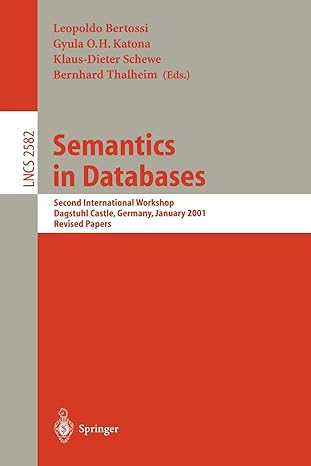Question
9. Alice wishes to regularly send Bob a plaintext message P1 or P2. On each occasion she chooses to send either P1 or P2, but
9. Alice wishes to regularly send Bob a plaintext message P1 or P2. On each occasion she chooses to send either P1 or P2, but on average she chooses the plaintext P1 twice as often as she chooses the plaintext P2. Each time, Alice uses a (very simple) symmetric cryptosystem, with the same fixed key K, to encrypt the plaintext. When she chooses P1, the ciphertext is C1 = EK (P1); when she chooses P2, the ciphertext is C2 = EK (P2). Suppose that an attacker knows that the only possible plaintext messages are P1 and P2.
(a) Suppose that the attacker does not know that Alice chooses P1 twice as often as P2. What observation will the attacker, who can only see the
ciphertexts sent from Alice to Bob, make?
(b) Suppose that the attacker learns that Alice chooses P1 twice as often as she chooses P2. What does the attacker now learn?
(c) Explain how homophonic encoding can be used in this case to make it more difficult.
Single plaintext letters can be replaced by any of several different ciphertext letters.
Step by Step Solution
There are 3 Steps involved in it
Step: 1

Get Instant Access to Expert-Tailored Solutions
See step-by-step solutions with expert insights and AI powered tools for academic success
Step: 2

Step: 3

Ace Your Homework with AI
Get the answers you need in no time with our AI-driven, step-by-step assistance
Get Started


